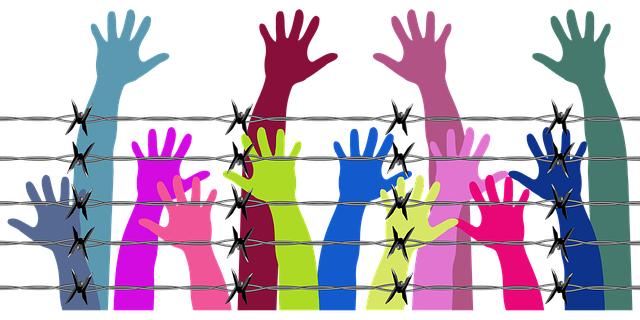Public Policy in Pakistan: Challenges and Opportunities Ahead
As the sun rises over the diverse landscape of Pakistan, it casts light on a nation at a crossroads. The intertwined narratives of tradition and modernity, aspiration and adversity permeate the fabric of this vibrant society. For a country with a rich history and a wealth of resources, the formulation and implementation of public policy stand as powerful tools capable of shaping its future. Yet, the road before Pakistan is fraught with challenges—ranging from economic instability and social inequalities to environmental threats and governance issues.
Amidst these hurdles, however, lie significant opportunities. A youthful population, burgeoning technological advancements, and a strategic geographic position all present pathways for transformative change. As policymakers grapple with the complexities of local and global demands, the importance of crafting inclusive, sustainable, and forward-thinking policies becomes ever more critical. This article delves into the current landscape of public policy in Pakistan, exploring the multifaceted challenges that hinder progress while shining a light on the opportunities that can pave the way for a more prosperous future. Join us as we navigate this intricate terrain, illuminating the potential for innovation and resilience in the face of adversity.
Navigating Political Instability and its Impact on Policy Formulation
The intricate tapestry of political instability in Pakistan has profound implications for the formulation of public policy. Frequent changes in leadership and shifts in party ideologies create an unpredictable landscape where long-term strategies often take a backseat to short-term gains. As policymakers grapple with immediate concerns, such as economic downturns and internal security threats, their focus diverges from establishing sustainable frameworks that address the root causes of these issues. Consequently, important sectors such as healthcare, education, and infrastructure suffer from neglect, leading to a cycle of ineffective governance and public dissatisfaction.
Amid these challenges lie unique opportunities for innovation and reform. Policymakers have the chance to embrace inclusive dialogue and stakeholder engagement to better align public policies with the needs of the populace. By fostering collaborative frameworks that involve civil society, private sector stakeholders, and grassroots movements, there is potential to create resilient policies that withstand the storms of political turmoil. Furthermore, leveraging technology can enhance transparency and accountability, enabling citizens to have a more meaningful role in the political process. This evolution could pave the way for a more participatory governance structure, allowing for a significant shift in how policies are formulated and implemented.
| Challenges | Opportunities |
|---|---|
| Frequent leadership changes | Inclusive policymaking |
| Short-term focus | Stakeholder engagement |
| Economic instability | Technology for transparency |

Harnessing Technological Innovations for Effective Governance
In an age where digital transformation is reshaping every aspect of life, Pakistan has an unparalleled opportunity to leverage technological advancements for better governance. By integrating data analytics, artificial intelligence, and blockchain technology, the efficiency and transparency of public services can be radically improved. For instance, utilizing data analytics can help the government analyze citizen feedback in real-time, enabling swift policy adjustments that align with public needs. Moreover, with blockchain, the government can enhance the integrity of public records, reduce corruption, and promote trust in governance.
To capitalize on these innovations, it is essential for policymakers to embrace a culture of continuous learning and adaptability. This can involve:
- Investing in digital infrastructure to ensure connectivity across urban and rural areas.
- Encouraging public-private partnerships to drive innovation in public service delivery.
- Fostering a workforce skilled in digital tools and technologies.
Furthermore, the government can establish innovation hubs to incubate ideas that address local challenges. A well-structured approach can transform governance into a more participatory process, with the public actively engaged in decision-making. The potential for increased citizen involvement expands not just the effectiveness of policies but also deepens democratic practices in the country.

Addressing Socioeconomic Inequalities through Inclusive Policy Frameworks
To combat the widening gap between various socioeconomic groups, Pakistan must embrace a holistic approach to public policy that prioritizes inclusivity and equity. By fostering collaborative partnerships between government, civil society, and private sectors, policies can be devised that specifically target marginalized populations. Such initiatives could include:
- Tailored educational programs that aim to uplift underprivileged communities through skills training and vocational education.
- Accessible healthcare services that consider the unique needs of different socioeconomic demographics, ensuring all citizens receive quality care.
- Employment initiatives that encourage entrepreneurship and job creation in underserved areas.
Moreover, economic policies can be enhanced through the integration of progressive taxation and social safety nets designed to protect the most vulnerable populations. A robust evaluation framework is essential to monitor the effectiveness of these measures, promoting continuous adaptation of the strategies in place. Below is a simple outline of potential policy measures:
| Policy Measure | Target Area | Expected Outcome |
|---|---|---|
| Microfinance Schemes | Entrepreneurship | Increased business ownership among low-income groups |
| Universal Health Coverage | Healthcare | Improved health outcomes for all citizens |
| Progressive Taxation | Revenue Generation | Reduction of income inequality |

Fostering Collaborative Efforts between Government and Civil Society for Sustainable Development
To achieve the ambitious goals of sustainable development in Pakistan, it is imperative to nurture a strong partnership between government entities and civil society organizations. Such collaboration can enhance transparency, foster accountability, and create a unified approach to tackling pressing social and environmental issues. Key areas for fostering this synergy include:
- Joint initiatives that leverage each party’s strengths
- Sharing of resources, knowledge, and best practices
- Engaging communities in decision-making processes
- Building a platform for open dialogue and feedback mechanisms
Moreover, establishing structured frameworks for collaboration can significantly bolster these efforts. By creating formal partnerships and alliances, stakeholders can align their objectives and measure progress effectively. Here’s a glimpse of what effective partnerships can achieve:
| Partnership Type | Objectives | Expected Outcomes |
|---|---|---|
| Government-Civil Society Task Forces | Policy formulation and implementation | Informed and sustainable policies |
| Community Engagement Programs | Local input in development plans | Increased community trust and participation |
| Resource Sharing Agreements | Enhanced project funding and support | Improved service delivery and impact |
In Conclusion
In the intricate tapestry of governance, public policy in Pakistan emerges as both a challenge and a canvas of opportunity. As the landscape continues to evolve, the nation stands at a crossroads, where informed decision-making and strategic planning can forge a path toward sustainable growth and social equity.
While the hurdles of bureaucracy, resource constraints, and political dynamics loom large, they are accompanied by a burgeoning civil society, a vibrant youth demographic, and an increasingly engaged citizenry, all eager to contribute to the nation’s narrative. The future of public policy in Pakistan lies not solely in addressing immediate issues but also in harnessing the collective aspirations of its people.
As we look toward the horizon, it becomes clear that the journey ahead is fraught with both obstacles and potential. By embracing innovation, fostering collaboration, and committing to inclusivity, Pakistan can transform these challenges into stepping stones for a brighter, more equitable future. The time for strategic action is now; the possibilities are vast, and the opportunity to reshape the public policy landscape is within reach. The road may be long, but with resilience and vision, Pakistan can navigate its way toward a prosperous tomorrow.



